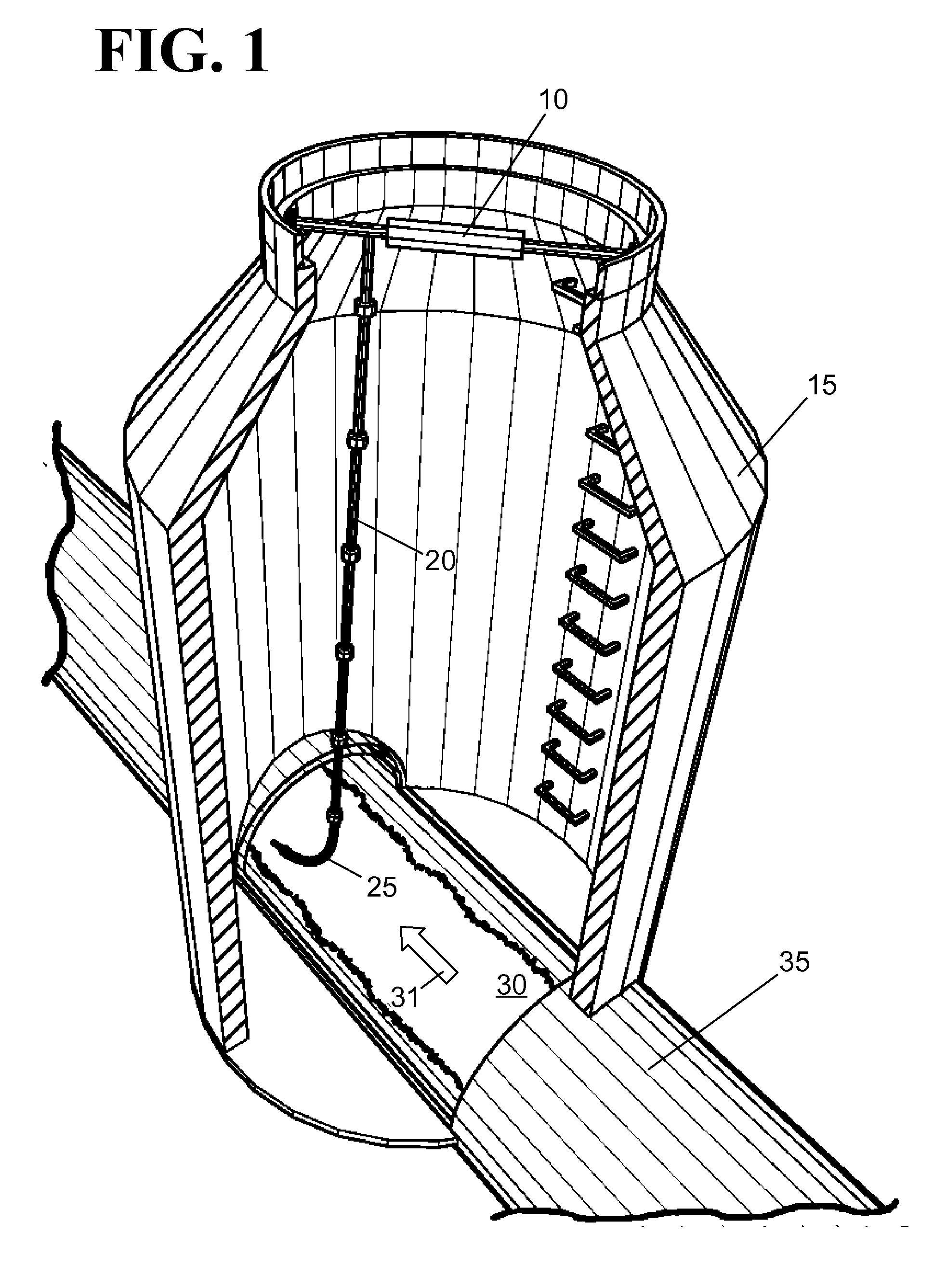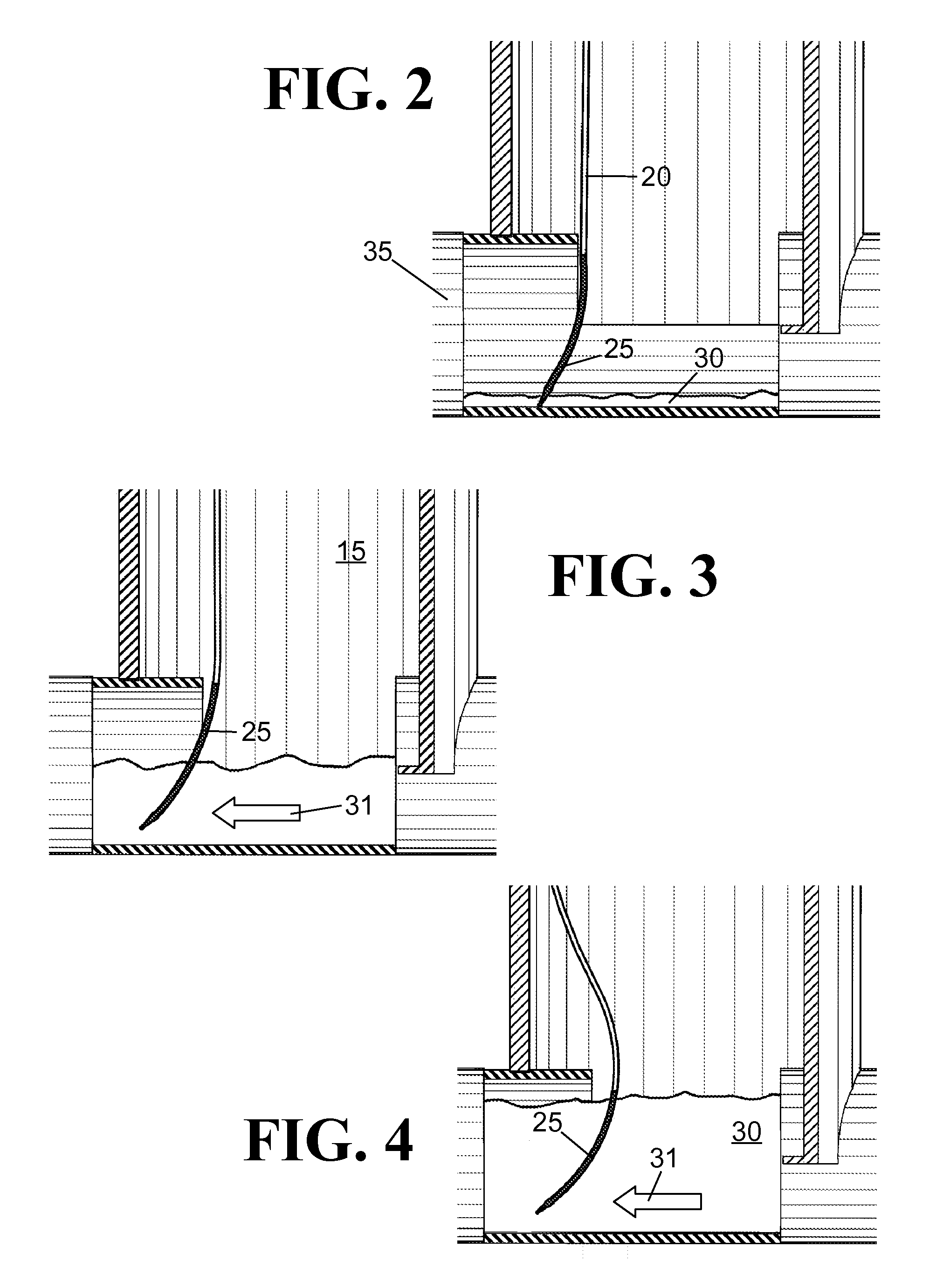However, in recent years, the technology for treating
wastewater has largely matured to the point that treatment facilities are decreasingly the source of significant water
pollution.
In either case, untreated wastewater can overflow from the
system into the environment.
The primary causes are restrictions and blockages in the sewer system, most often caused by the accumulation of debris, roots and / or
grease in a sewer
pipe.
In wet weather conditions,
storm water runoff may overwhelm the capacity of a combined
sanitary sewer and
storm water system, and cause the system to overflow.
Studies have shown, however, that restrictions and blockages are the primary causes of overflows, not a lack of capacity in the system.
Thus, simply adding additional capacity leads to
piping systems that are underutilized and more expensive than necessary to serve the sanitary needs of the
community.
Even if the infiltration does not lead to a system overflow, infiltration and inflow of
storm water into a
sanitary sewer system leads to increased costs because the storm water inflow must then be treated along with the untreated
sewage.
Restrictions, infiltrations and inflows lead to increased costs and potential environmental problems, and an SSO may result in untreated
sewage being released into the environment or backing up into residential basements.
However, because these pipes are typically underground, the infiltration point is difficult if not impossible to locate and detect by
visual inspection during a wet weather event.
Although the location of an overflow may be obvious, the source of the extra water that is actually causing the overflow may be a mystery.
Also, in most cases, the only evidence of infiltration is the increased burden on treatment facilities during a wet weather event.
Such flow measurement studies, however, are difficult and expensive to administer, in addition to being difficult to schedule due to the unpredictability of the weather.
Some larger authorities have employed complex and expensive evaluation methods to identify potential causes of sewer infiltration and SSO's.
These methods often include the use of expensive devices for monitoring flow at different points in the system and the employment of personnel and / or consultants to collect and analyze data from the flow monitoring devices.
Although inexpensive compared to other measurement techniques, these types of devices necessarily obstruct the fluid flow.
In addition, these types of devices are not well suited for certain applications because the
measurement device cannot be easily inserted and secured in the fluid flow.
Although more precise and reliable, these types of devices are typically very expensive, limiting their application.
Also, due to limitations of the technology, these devices are often not well suited for measuring irregular flows that may include solids.
These types of flow meters are also disadvantageous for many applications because they are difficult to install, calibrate, and operate.
Although these and other devices have been developed that measure fluid flow based on the measurement of vortices or the oscillation of an object in a fluid flow, such fluid flow measurement technique has not seen widespread application.
Specifically, many conventional
sewage flow meters and associated techniques are often beyond the financial capacity and skill set of small and medium sized sanitary system authorities.
Also, because of the cost and complexity of these evaluation methods, a complete review of the entire sanitary system is typically not performed by sanitary system authorities capable of affording such techniques and
software.
Thus, although general problem areas in the system may be identified, specific
pipe restrictions and blockages may be missed.
Due to the cost of employing data collection personnel and consultants, the review and analysis of most
sanitary sewer systems is typically short lived, and usually only performed in response to a specific problem or overflow.
Prior art evaluation techniques are typically project-based, specific to a particular problem and not designed for ongoing assessment of the collection network.
The
resultant data is typically not incorporated into the ongoing operation and maintenance procedures of the authority, and is therefore not helpful in identifying and solving future problems in the system.
This critical next step can be expensive and difficult to conduct.
If the study merely identifies large portions of the system that have infiltration, the study is essentially useless because these large portions must still be inspected.
Those of skill in the art have developed complex methodologies and expensive solutions to provide greater precision in identifying the potential location of infiltration and inflow.
Although this solution may be cost effective because it decreases the cost of the next step in the process, this solution is nonetheless very expensive and beyond the financial capabilities of many small and medium sized sanitary sewer system authorities.
Sewage flow measurement devices are expensive, and the additional personnel required to monitor and measure additional points in the system also increases the expense of the sewage flow measurement study.
These techniques often require extended on-
sight evaluations by consultants, which further increases the cost.
Because the evaluation of sanitary sewer systems has historically been project-based and in response to a specific problem or overflow, little attention has been paid to the ongoing maintenance and upkeep of the system.
However, sewer system assets that are not regularly maintained deteriorate faster, leading to higher replacement and
emergency response costs.
When a sewer system is regularly maintained, its lifetime can be increased and maintenance costs distributed over the lifetime of the system.
 Login to View More
Login to View More  Login to View More
Login to View More 


